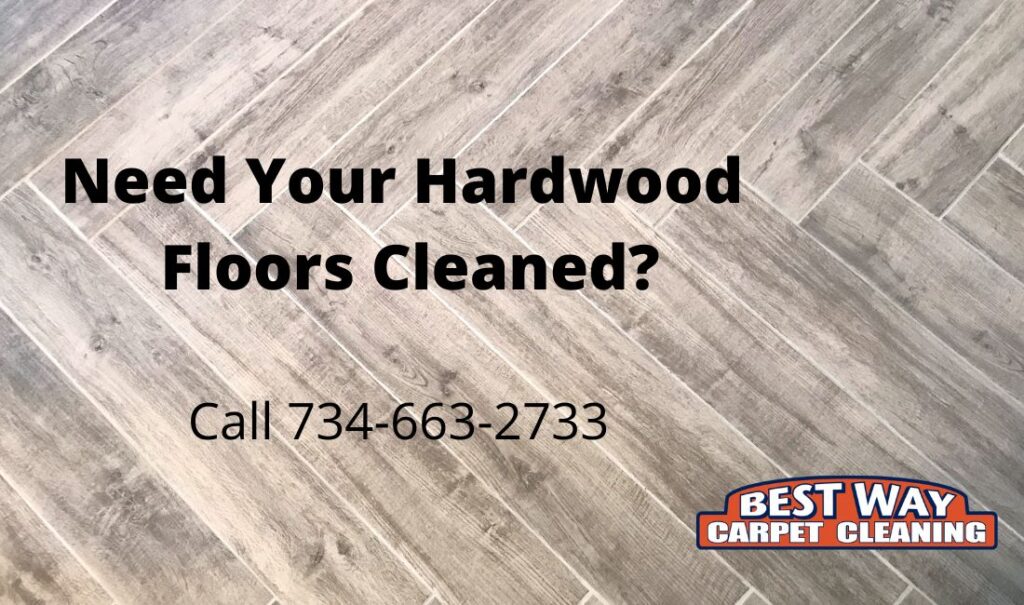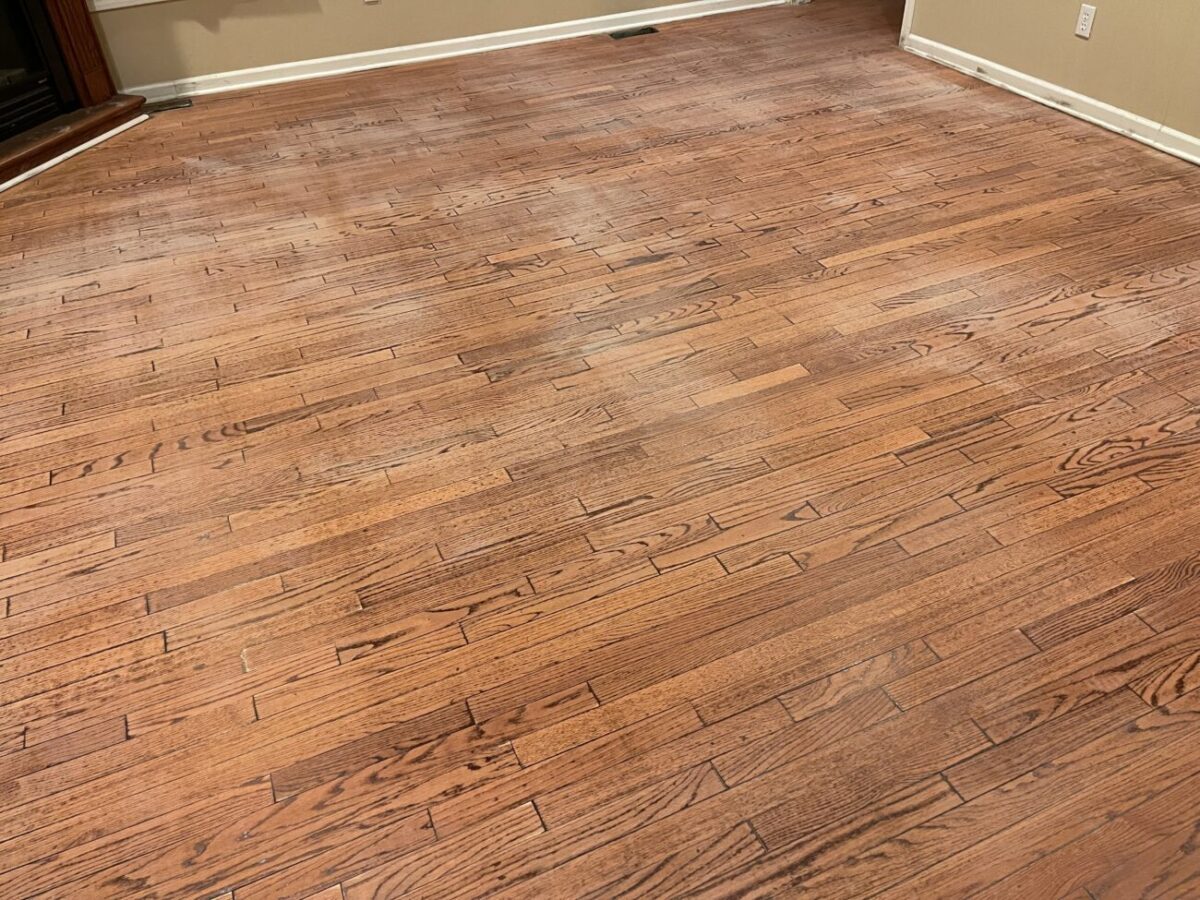Despite their durability and beauty, hardwood floors can be troublesome to maintain. There are many issues associated with hardwood flooring.
It is important to understand some of the issues with hardwood floors as well as what can be done to prevent them. If your hardwood floors need to be refinished, contact Best Way today for a free evaluation and/or quote.
In one way, hardwood floors are an investment, as they are far from the cheapest flooring options. They are among the most expensive floor coverings. Although hardwood floors look great, there are some problems that people aren’t always aware of. Hardwood floors are prone to damage from spills, pets, children, and humidity, to name a few. These problems can lead to irreversible damage. In the event that your floor is showing signs of wear and tear, you should not put it off any longer.
Let’s Look at 7 Common Problems with Hardwood Floors –
Expansion and Contraction: The wood floors must be installed properly to last through the seasons. They might show signs of expansion during wet weather, while there might be gaps during dry weather.
An abnormal gap may be caused by an issue such as flooring that wasn’t allowed to sit prior to installation. Still, it may also result from installing flooring in excessively dry areas.
Cupping: The problem with wood is that it is not waterproof. Without proper finish, moisture can enter the wood pores and cause problems such as cupping. To avoid cupping, be sure to maintain a proper thickness of polyurethane finish.
Buckling: Buckling is one of the most extreme ways wood flooring can react to the weather. Buckling often happens because of flooding or excess moisture, but other problems can occur if the boards aren’t installed correctly or don’t have enough room to expand.
Peeling of finish: When the floor is contaminated or poorly prepared, the floor finish may peel, crack, or begin flaking off. This can occur when new finish is applied to a contaminated surface. Contamination is the result of existing wax, acrylic, or other polishing agents present on the surface of the floors. Never just apply a finish over floors that haven’t been prepared for it. This will lead to premature bonding failures.
Debris in the finish: Debris may be introduced during the sanding and finishing processes. Suppose hair, dirt, or other contaminants are not removed before finishing. In that case, they become a permanent part of the finish if they come into contact with it when it dries. The only way to remove debris is to sand and refinish.
Pet Stains: Wooden floors aren’t as stain-resistant as other flooring options, so they need a strong protective coat over them. It’s important to keep an eye out for the warning signs of spills and accidents. It is difficult to remove pet stains once they penetrate into the wood. Pet stains soak through the finish into the wood fibers, making it nearly impossible to remove without sanding. If a stain has been sitting for a long time, it may have permanently damaged the planks.
Cracks: There are many possible causes of cracks on the hardwood floor. The most common cause is moisture, but other reasons include warping, swelling, shrinkage, and a heavy object being dropped on them. Improperly applied nails can cause splitting over time.
After determining the underlining factor for a crack in your floors, there are few remedies to try to prevent further cracking.
Hardwood floors can be quite expensive to repair once they have become damaged. We highly encourage routine inspections and maintenance to help prevent unnecessary problems from occurring.

How To Handle Excess Moisture?
One of the most common problems that hardwood floors face when dealing with excess moisture. Solid hardwood floors are very reactive to excessive moisture. If you notice that your hardwood floors seem to be taking on water when it rains, then you probably have a problem that needs to be fixed immediately. Engineered Hardwood floors can be far worse when taking on excess moisture because the layers of compound wood will begin to swell and planks will need to be replaced.
Fix the Level of Moisture
The thing to try when wood floors become moisture saturated is to remove excess moisture from the air. You will need to use a dehumidifier so that the air in your home will not be saturated with moisture. This is really the only solution for homeowners who live in high-humidity areas such as near an ocean or a city that has lots of rain. That said, there is a chance that your hardwood may be restored when all of the moisture is removed from the affected areas. If not, they will need to be replaced.
What To Do If Your Wood Flooring Is Separated?
One of the problems with hardwood flooring is that it expands and contracts as it changes temperature. It is recommended that you apply some expansion or gap sealer every time you refinish your floor to prevent moisture from getting into the floorboard and causing it to split.
Wood floors can become damaged if they are not properly maintained, so if you are planning on building a new home, make sure to get a reputable and experienced company to install it for you.
What Causes Wood Floors to Separate?
Wood is a completely natural product. It expands and contracts when exposed to moisture and temperature changes. When the weather is hot, and the air is humid, wood can expand and take in moisture. The dry, cold weather means that the wood contracts and contracts and contracts. That’s how wood reacts to changes in temperature. As boards expand and contract more, they may develop unsightly and often draughty gaps, or they may cup or bow because they don’t have enough room to expand as much as the conditions are forcing them to. This situation can be avoided by taking the necessary steps.
Properly Installed by Professionals.
When installing floorboards, make sure you’ve got them lined up correctly and installed properly. Remedies can be applied to tighten up the contact of the boards after installation, but ideally, this situation can be avoided by taking better care during the installation.
Water damages cause warping. Warping can be caused by various things and is a common problem with hardwood floors. If you live in an area with excessive rain, you’ve bound to face this problem, and it could only be solved if you replace the damaged plank. You will have to refinish the entire floor if you replace the buckled plank.
When It’s Time to Refinish the Hardwood Floors
Refinishing hardwood floors is a great way to give them a new lease on life. If you’re not sure when it’s time to refinish, here are a few signs that it might be time:
The finish is worn: If the finish on your hardwood floors is starting to look worn, it’s probably time for a refresh. This is especially true if the floors are starting to look dull.
There are scratches: Over time, hardwood floors can start to show scratches and other signs of wear. If this is the case, it’s time to refinish the floors.
The color is faded: If the color of your hardwood floors has faded, it might be time to refinish them. This is especially true if you’ve noticed that the floors are lighter in some areas than others.
If you’re thinking about refinishing your hardwood floors, the first step is to determine if they actually need it. If the floors are in good condition, you might be able to get away with just cleaning them. But if they’re in bad shape, it’s probably time for a more thorough refinishing job.
What to Do If You Are Unsure What Your Floors Need?
If your floors are starting to show a lot of surface scratches in the top finish, it might be time for a screen and recoat. We are specialists in providing high-quality hardwood flooring maintenance, and we can assist you with this problem. Call us today at 734-663-2733


